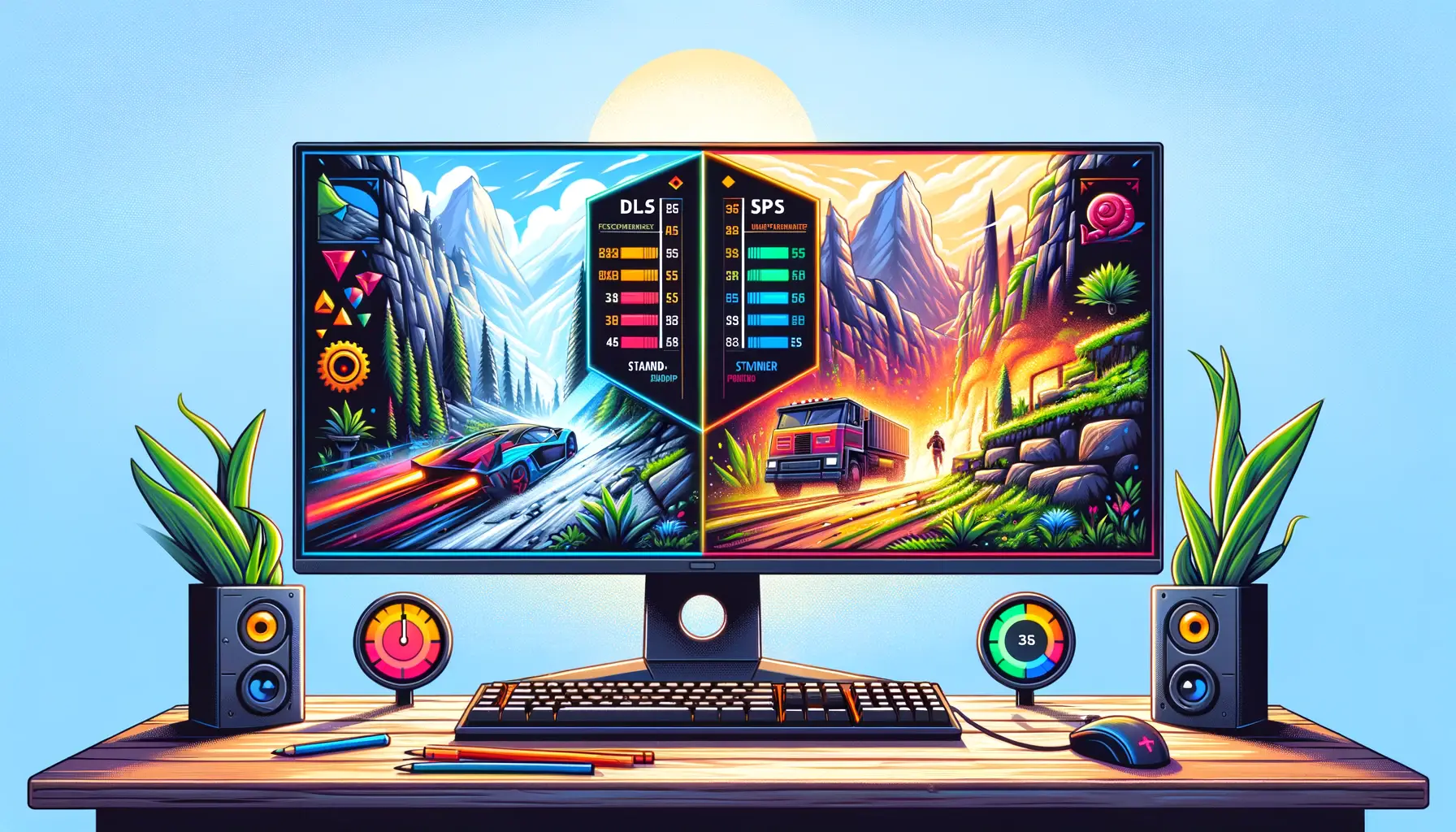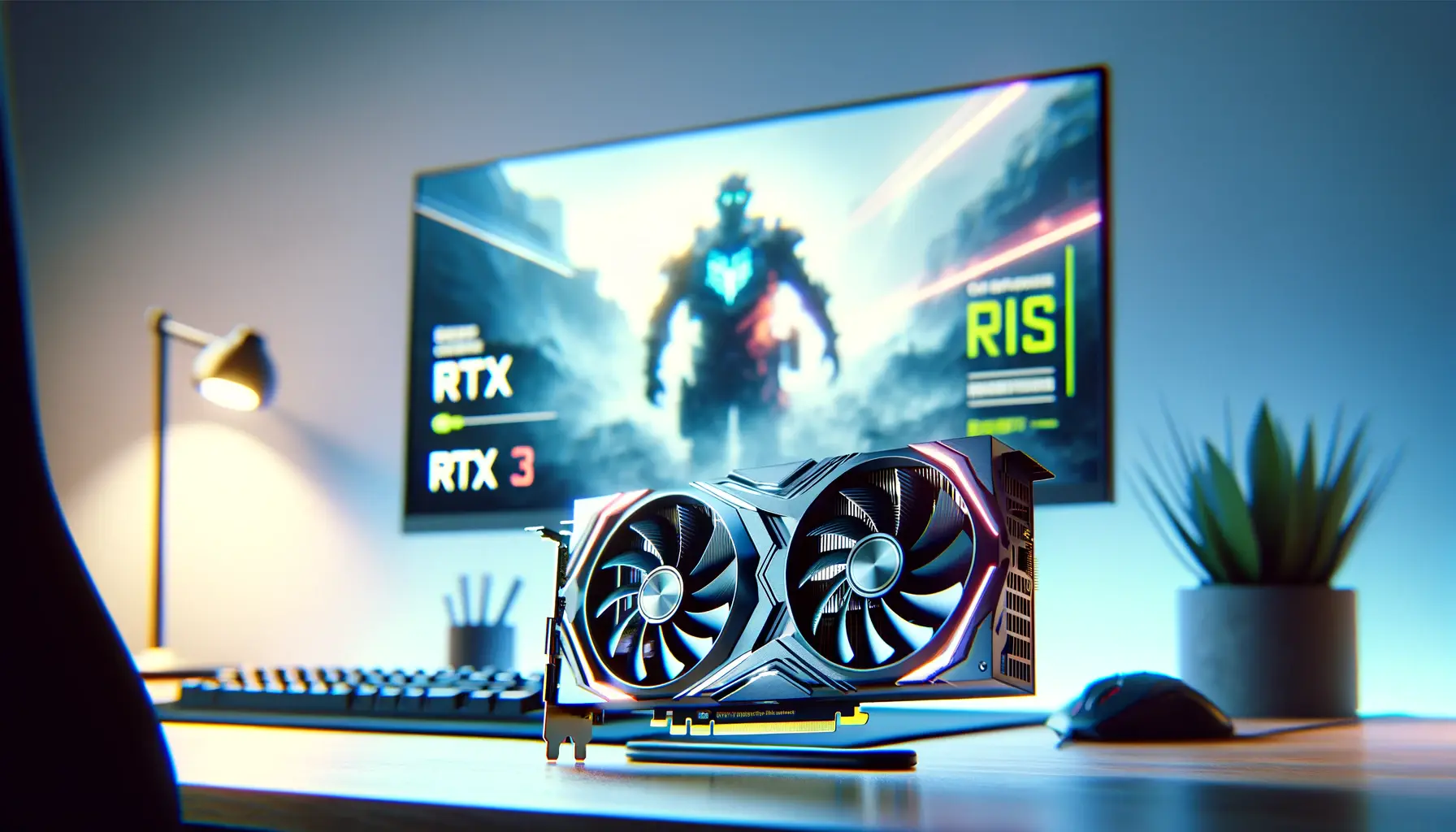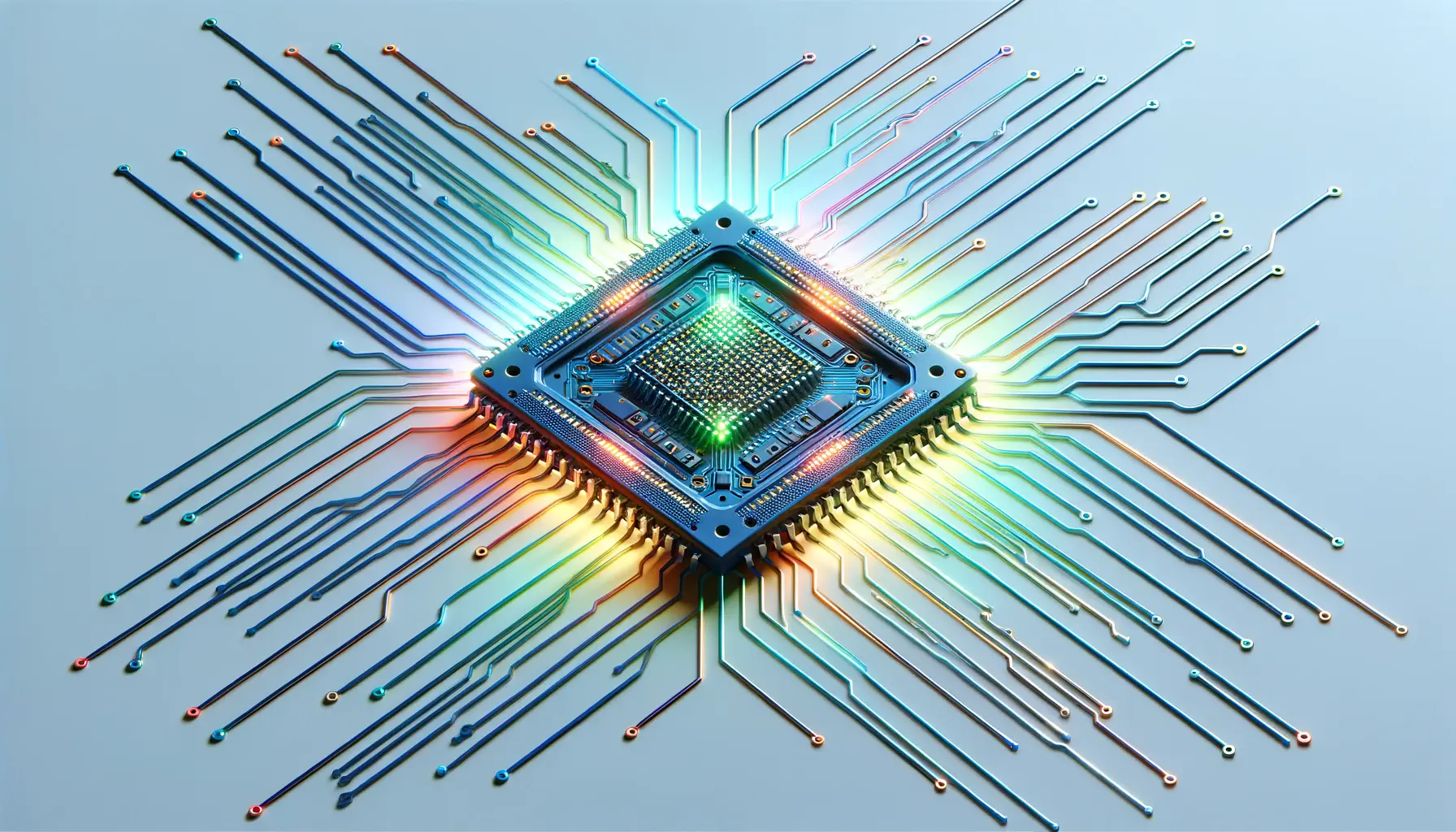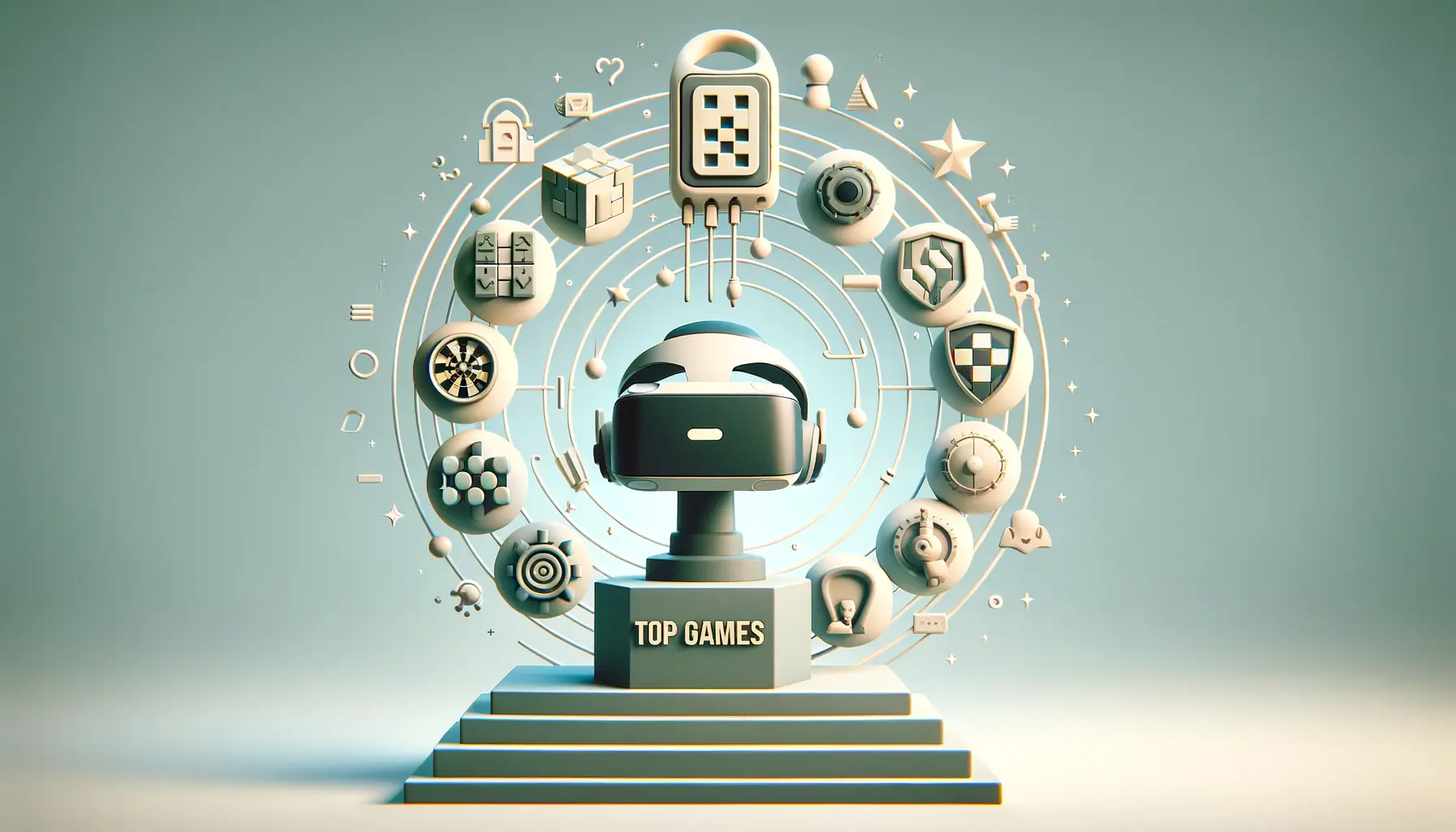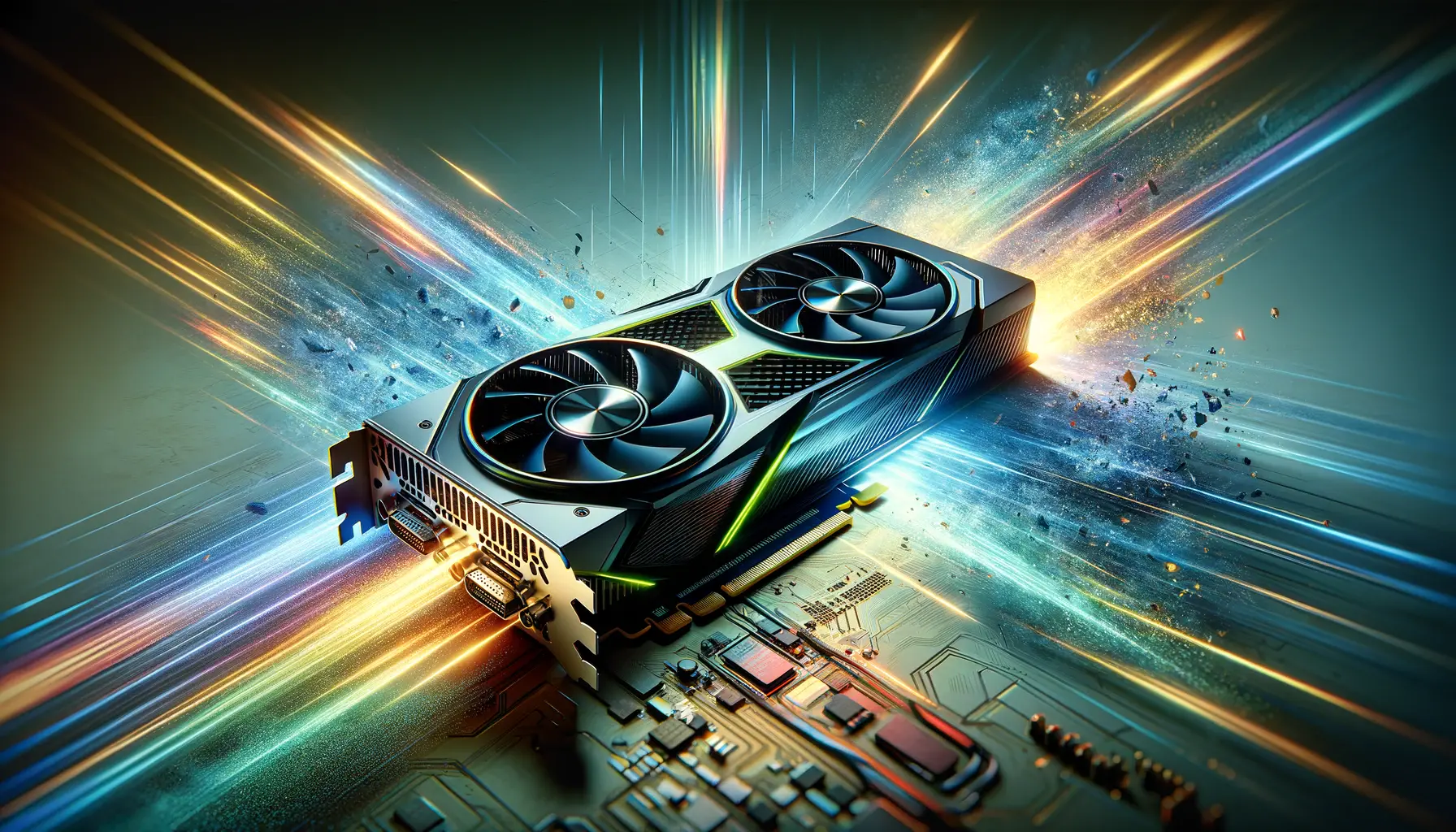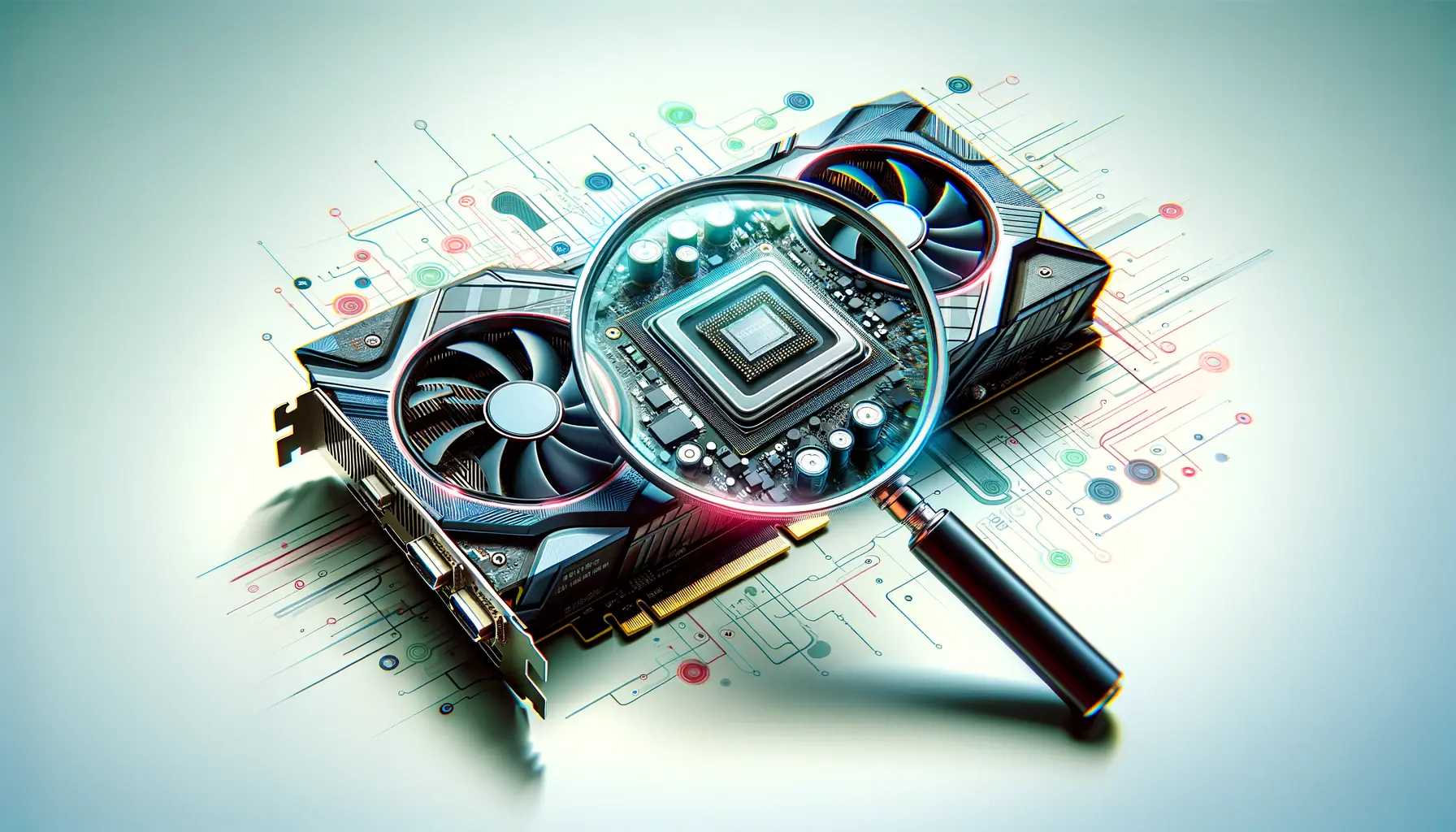The gaming industry is constantly evolving, with new technologies emerging to push the boundaries of what’s possible in virtual worlds.
One such innovation that has garnered significant attention is NVIDIA’s Deep Learning Super Sampling (DLSS) technology, particularly its latest iteration, DLSS 3.
This technology represents a leap forward in rendering efficiency and performance, offering gamers smoother and more visually stunning experiences without compromising on speed or quality.
As multiplayer games continue to dominate the gaming landscape, understanding the impact of DLSS 3 on these titles becomes crucial for both developers and players alike.
DLSS 3, developed by NVIDIA, leverages artificial intelligence and machine learning to upscale images in real-time, allowing games to run at higher frame rates while maintaining or even improving visual fidelity.
This is particularly beneficial in multiplayer games, where fast-paced action and split-second decisions are the norms.
The technology’s ability to deliver higher performance without the traditional cost of increased hardware demand opens up new possibilities for game design and player experience.
However, the integration and effectiveness of DLSS 3 in multiplayer environments pose unique challenges and opportunities that merit a closer examination.
- Understanding DLSS 3 Technology
- DLSS 3 in Action: Real-World Performance
- Optimizing DLSS 3 for Competitive Play
- DLSS 3’s Impact on Game Development
- Challenges and Considerations with DLSS 3
- DLSS 3 and Esports: A New Era of Competitive Gaming
- Future Directions of DLSS Technology
- Embracing the Future with DLSS 3
- DLSS 3 Performance in Multiplayer Games: FAQs
Understanding DLSS 3 Technology
How DLSS 3 Works
At its core, DLSS 3 utilizes a neural network to analyze and upscale images from a lower resolution to a higher one, effectively increasing frame rates while maintaining high visual quality.
This process involves generating intermediate frames that predict motion and detail, filling in the gaps between actual frames rendered by the game’s engine.
The result is a smoother, more fluid visual output that can significantly enhance the gaming experience, especially in fast-paced multiplayer scenarios where every millisecond counts.
The technology’s reliance on AI means that it continuously learns and improves over time, adapting to new games and graphical demands.
This adaptability is crucial for maintaining performance across a wide range of titles and gaming environments, ensuring that players can enjoy the benefits of DLSS 3 regardless of the specific demands of each game.
The Impact on Multiplayer Gaming
In multiplayer games, where the action is relentless and the competition fierce, DLSS 3’s ability to boost frame rates without sacrificing visual quality is a game-changer.
Higher frame rates translate to smoother gameplay, giving players a competitive edge by improving reaction times and reducing input lag.
This is particularly important in genres such as first-person shooters or racing games, where precision and timing are key to success.
Moreover, DLSS 3’s efficiency allows for more detailed and expansive game worlds without the fear of performance drops.
Developers can push the envelope on graphics and physics, creating more immersive and engaging multiplayer experiences that draw players in and keep them coming back for more.
DLSS 3 represents a significant advancement in gaming technology, offering the dual benefits of enhanced performance and visual fidelity. Its impact on multiplayer games is profound, providing smoother gameplay and competitive advantages that can redefine player experiences.
DLSS 3 in Action: Real-World Performance
The real-world performance of DLSS 3 in multiplayer games is not just theoretical; it has been demonstrated in various titles, showcasing significant improvements in both frame rates and visual clarity.
By analyzing specific case studies, we can better understand how DLSS 3 impacts gameplay and player experience in a multiplayer setting.
One of the key aspects of DLSS 3’s implementation is its adaptability across different game engines and genres.
From high-octane racing games to strategic team-based shooters, DLSS 3 has shown its versatility and effectiveness.
Below are examples of multiplayer games that have benefited from DLSS 3 technology:
- First-Person Shooters (FPS): In fast-paced FPS games, where reaction time and accuracy are paramount, DLSS 3 helps maintain a high frame rate, ensuring that the gameplay remains smooth even during intense firefights. Players report improved target tracking and reduced motion blur, leading to better performance in competitive play.
- Racing Games: For racing titles that demand high-speed precision, DLSS 3 provides a clearer and more stable visual experience. By smoothing out the edges and enhancing the detail of distant objects, players can anticipate turns and obstacles more effectively, leading to faster lap times.
- Massive Multiplayer Online (MMO) Games: MMOs, known for their vast, detailed worlds and large player counts, can experience performance issues due to the sheer amount of data being processed. DLSS 3 helps alleviate these issues, allowing for smoother exploration and combat without compromising the game’s visual richness.
Comparative Performance Analysis
To quantify the benefits of DLSS 3, let’s consider a comparative analysis of frame rates and visual quality in a popular multiplayer game, both with and without DLSS 3 enabled.
Players have observed up to a 70% increase in frame rates while maintaining similar or even improved visual quality.
This improvement is not just about higher numbers on a benchmark test; it translates directly into a more responsive and enjoyable gaming experience.
Furthermore, the technology’s impact on latency is another critical factor for multiplayer games.
Despite the process of generating additional frames, DLSS 3, coupled with Nvidia Reflex, manages to keep input lag to a minimum.
This ensures that the increase in visual performance does not come at the cost of gameplay responsiveness, a balance that is crucial for competitive gaming.
While DLSS 3’s benefits are clear, it’s important for players to experiment with the settings to find the optimal balance for their specific hardware and gaming preferences. The technology offers various modes, each tailored to different performance or quality priorities.
Optimizing DLSS 3 for Competitive Play
For gamers looking to harness the full potential of DLSS 3 in a competitive multiplayer environment, optimization is key.
Understanding how to fine-tune the settings to match your hardware and gameplay needs can make a significant difference in performance.
Here are some strategies to optimize DLSS 3 for competitive play:
- Choosing the Right DLSS Mode: DLSS 3 offers several modes, including Quality, Balanced, Performance, and Ultra Performance. For competitive gaming, where frame rate is crucial, the Performance or Balanced modes are often the best choices. They provide a good compromise between visual fidelity and high frame rates.
- Monitoring Frame Rates: Use in-game tools or third-party software to monitor your frame rates while adjusting DLSS settings. This will help you understand the impact of each setting on performance and allow you to make informed adjustments.
- Adjusting In-Game Settings: In addition to DLSS settings, tweaking in-game graphics settings can further optimize performance. Lowering certain demanding options can increase frame rates without significantly affecting visual quality, especially when combined with DLSS 3.
Hardware Considerations
While DLSS 3 is designed to maximize performance across a range of hardware, the benefits can vary depending on your system’s specifications.
For those with high-end GPUs, DLSS 3 can push frame rates to the limit, making 144Hz or even 240Hz displays a viable option for ultra-smooth gameplay.
On the other hand, mid-range systems can achieve a more stable and consistent frame rate, ensuring that gameplay remains fluid without frequent drops or stuttering.
It’s also worth noting that the effectiveness of DLSS 3 can be influenced by your CPU.
In scenarios where the CPU is the bottleneck, DLSS 3’s frame generation can help alleviate some of the performance constraints, allowing the GPU to work more efficiently and boost overall game performance.
Network Performance
While DLSS 3 significantly enhances visual performance and responsiveness, it’s important to remember that network performance is also a critical factor in competitive multiplayer games.
A high frame rate and low input lag can only do so much if your internet connection is unstable or slow.
Ensuring a stable and fast network connection, possibly through wired connections or high-quality Wi-Fi hardware, is essential for taking full advantage of the improvements DLSS 3 offers.
For competitive gamers, the combination of DLSS 3 optimization and a stable network connection can be the key to gaining an edge over the competition. Balancing these aspects can lead to a superior gaming experience, where skill and strategy are not hindered by technical limitations.
DLSS 3’s Impact on Game Development
The advent of DLSS 3 technology is not only transforming the player experience but also revolutionizing the game development process.
With the ability to deliver high-quality visuals at significantly improved frame rates, developers are now empowered to push the boundaries of game design without being constrained by hardware limitations.
This section explores how DLSS 3 is influencing the future of game development, particularly in the realm of multiplayer games.
One of the most significant impacts of DLSS 3 on game development is the liberation of graphical fidelity.
Developers can now incorporate more detailed textures, complex particle effects, and expansive game worlds, knowing that DLSS 3 can handle the increased demand without compromising performance.
This freedom allows for a more immersive gaming experience, with richly detailed environments that were previously difficult to achieve in multiplayer settings due to the need for high frame rates.
Enhancing Multiplayer Experiences
DLSS 3 also enables developers to create more dynamic and interactive multiplayer environments.
With the technology’s ability to smooth out performance across various scenes, developers can introduce more elements of destructibility, weather effects, and AI-driven events without worrying about sudden drops in frame rates that could disrupt the gameplay experience.
Furthermore, the improved performance offered by DLSS 3 opens up new possibilities for cross-platform play.
Developers can more easily optimize their games for a wide range of hardware, ensuring that players on different platforms can compete against each other without significant disparities in frame rates or visual quality.
This inclusivity enhances the multiplayer community, bringing together more players regardless of their hardware preferences.
Future-Proofing Games
DLSS 3 is also seen as a tool for future-proofing games.
As hardware continues to evolve, games developed with DLSS 3 support can easily benefit from future advancements in GPU technology.
This means that a game released today can still perform well and look great on tomorrow’s hardware, extending its lifespan and relevance in the gaming community.
Moreover, the technology’s scalability allows developers to target a wider audience.
By accommodating a range of performance settings through DLSS 3, games can be made accessible to players with older or less powerful hardware, expanding the potential player base and ensuring that more gamers can enjoy the latest titles at acceptable performance levels.
DLSS 3 is shaping up to be a pivotal technology in game development, offering both immediate benefits in terms of performance and visual quality, and long-term advantages in game design flexibility and audience reach. Its impact on multiplayer games, in particular, highlights the technology’s role in advancing the gaming industry.
Challenges and Considerations with DLSS 3
While DLSS 3 technology offers significant advantages in terms of performance and visual quality, its implementation and usage come with certain challenges and considerations.
Understanding these factors is crucial for both developers and gamers to fully leverage the technology while being mindful of its limitations and potential impact on the gaming experience.
One of the primary challenges is the hardware requirement.
DLSS 3 is currently exclusive to NVIDIA’s latest generation of RTX graphics cards, which may limit its accessibility to a portion of the gaming community.
This exclusivity raises questions about the technology’s widespread adoption and its impact on gamers who use older hardware or GPUs from other manufacturers.
- Compatibility and Accessibility: The requirement for specific NVIDIA GPUs may exclude a significant number of gamers, potentially creating a divide in the gaming community between those who can benefit from DLSS 3 and those who cannot.
- Integration Effort for Developers: Implementing DLSS 3 into games requires additional development effort. Developers must work closely with NVIDIA to ensure their games are compatible with the technology, which may not always be feasible for smaller studios or indie developers.
- Artificial Frame Generation: While DLSS 3’s frame generation improves performance, it also introduces concerns about the authenticity of the gaming experience. Some purists argue that artificially generated frames may not accurately represent the game as intended by the developers.
- Visual Artifacts: Although rare, DLSS 3 can sometimes produce visual artifacts, especially in scenes with rapid motion or complex lighting effects. Identifying and addressing these issues can be challenging and may require ongoing updates and optimizations.
- User Customization: Gamers need to understand the various DLSS 3 settings and how they impact game performance and visual quality. Finding the optimal balance between performance and fidelity requires experimentation, which may not appeal to all users.
Overcoming Challenges
To address these challenges, ongoing collaboration between NVIDIA, game developers, and the gaming community is essential.
NVIDIA continues to refine DLSS technology, working to expand compatibility and reduce visual artifacts through software updates.
Developers, on their part, are finding innovative ways to integrate DLSS 3 into their games, ensuring that the technology enhances the gaming experience without detracting from the game’s artistic vision.
For gamers, education and experimentation are key.
Understanding the settings and options available with DLSS 3 allows players to tailor their gaming experience to their preferences and hardware capabilities.
Community forums and guides play a crucial role in sharing knowledge and optimization tips, helping gamers navigate the complexities of DLSS 3.
Despite its challenges, DLSS 3 represents a significant step forward in gaming technology. By addressing these considerations, the gaming industry can continue to harness the benefits of DLSS 3, pushing the boundaries of performance and visual quality in multiplayer games and beyond.
DLSS 3 and Esports: A New Era of Competitive Gaming
The integration of DLSS 3 technology into esports represents a transformative shift in the competitive gaming landscape.
Esports, known for its intense competition and reliance on split-second decision-making, demands the highest levels of performance and visual clarity.
DLSS 3’s ability to enhance frame rates while maintaining or improving visual fidelity has the potential to elevate the esports experience for both players and spectators.
For esports athletes, the advantages of DLSS 3 are clear.
Higher frame rates translate to smoother gameplay, allowing for more precise movements, better reaction times, and a competitive edge in fast-paced matches.
Additionally, the improved visual quality ensures that players can spot enemies, identify key game elements, and navigate complex environments with greater ease.
- Enhanced Spectator Experience: DLSS 3 not only benefits players but also enhances the viewing experience for spectators. Higher frame rates and improved visuals make broadcasts more engaging and easier to follow, especially during high-action moments.
- Standardization Across Tournaments: The adoption of DLSS 3 in esports could lead to more standardized hardware and performance benchmarks across tournaments, ensuring a level playing field for all competitors.
- Future-Proofing Esports Titles: As esports titles continue to evolve, DLSS 3 provides a means to future-proof these games, ensuring they can take advantage of advancements in GPU technology and maintain high performance standards.
Adoption Challenges in Esports
Despite its benefits, the adoption of DLSS 3 in esports faces challenges.
The requirement for specific NVIDIA RTX GPUs may limit accessibility for some players and organizations, particularly those with existing hardware partnerships or those operating on tighter budgets.
Additionally, the variability in performance and visual settings introduced by DLSS 3 could raise concerns about fairness and consistency in competitive play.
To address these challenges, esports leagues and tournament organizers may need to establish clear guidelines and standards for the use of DLSS 3 and similar technologies.
This could include specifying approved hardware configurations, setting minimum performance benchmarks, and ensuring that all competitors have access to the technology.
The integration of DLSS 3 into esports represents an exciting development with the potential to enhance competitive gaming at all levels. By navigating the challenges of adoption and standardization, the esports community can fully leverage the benefits of DLSS 3, ushering in a new era of performance and visual excellence in competitive gaming.
Future Directions of DLSS Technology
The evolution of Deep Learning Super Sampling (DLSS) technology, culminating in the release of DLSS 3, marks a significant milestone in gaming and graphics technology.
However, the journey doesn’t end here.
The future of DLSS and similar AI-driven technologies holds immense potential, promising to further revolutionize the way games are played and experienced.
As we look ahead, several key areas of development and expansion are poised to shape the next generation of gaming.
One of the most exciting prospects is the continued improvement of AI algorithms that drive DLSS.
With advancements in machine learning and neural networks, future versions of DLSS could offer even more significant performance gains, reduced latency, and higher visual fidelity.
These improvements would not only enhance the gaming experience for current titles but also enable developers to create more visually stunning and complex games that were previously unimaginable due to hardware constraints.
- Broader Hardware Support: Expanding DLSS technology to a wider range of hardware, including older GPU models and potentially non-NVIDIA graphics cards, could democratize access to high-quality gaming experiences, making them available to a larger audience.
- Integration with Emerging Technologies: Combining DLSS with other emerging technologies, such as ray tracing and virtual reality, could lead to new levels of immersion and realism in games. As these technologies evolve, DLSS could play a crucial role in mitigating their performance demands, making them more accessible to gamers.
- Enhanced AI Training and Customization: Future iterations of DLSS could offer more advanced customization options, allowing gamers and developers to fine-tune the balance between performance and visual quality to suit their specific needs. Additionally, leveraging cloud-based AI training could further improve the efficiency and effectiveness of DLSS algorithms.
- Adoption Beyond Gaming: While DLSS is primarily focused on gaming, its underlying technology has potential applications in other areas, such as content creation, simulation, and professional visualization. Expanding DLSS to these domains could open up new possibilities for high-performance graphics across a range of industries.
The trajectory of DLSS technology suggests a future where the barriers between gaming and reality continue to blur.
As AI and machine learning technologies advance, the potential for DLSS to transform not just gaming but the broader landscape of digital graphics is immense.
The ongoing collaboration between hardware manufacturers, game developers, and the gaming community will be pivotal in realizing this potential, driving innovation, and shaping the future of interactive entertainment.
The future of DLSS technology is bright, with the promise of further bridging the gap between the virtual and the real. As we stand on the cusp of these advancements, the anticipation for what’s next in the realm of AI-driven graphics enhancement is palpable, heralding an exciting new chapter for gamers and developers alike.
Embracing the Future with DLSS 3
The journey through the realms of DLSS 3 and its impact on multiplayer games has been both enlightening and promising.
As we’ve explored the nuances of this groundbreaking technology, it’s clear that DLSS 3 is not just a temporary advancement but a significant leap towards redefining gaming performance and visual fidelity.
The implications of DLSS 3 extend beyond mere technical enhancements, offering a glimpse into a future where the lines between virtual and reality are increasingly blurred.
The Competitive Edge in Multiplayer Gaming
In the fiercely competitive arena of multiplayer games, DLSS 3 emerges as a game-changer.
By enabling higher frame rates without compromising on visual quality, it provides players with the smooth, responsive gameplay essential for competitive success.
The technology’s ability to adapt and improve over time promises an ever-evolving gaming landscape, where players can continually enjoy enhanced experiences as DLSS technology advances.
A Catalyst for Game Development
For game developers, DLSS 3 opens new horizons of creativity and innovation.
Freed from the constraints of hardware limitations, developers can now craft more detailed, immersive worlds, pushing the boundaries of what’s possible in game design.
This technological empowerment is set to usher in a new era of gaming, where developers can fully realize their visions without sacrificing performance.
- DLSS 3’s role in future-proofing games ensures that today’s titles will continue to impress on tomorrow’s hardware, extending their lifespan and relevance.
- The technology’s potential to democratize high-quality gaming experiences across a broader range of hardware promises a more inclusive gaming future.
Challenges and Opportunities Ahead
Despite the undeniable advantages of DLSS 3, the path forward is not without its challenges.
Issues of hardware exclusivity, integration efforts, and the need for widespread adoption among developers and gamers alike highlight the hurdles that lie ahead.
However, these challenges also present opportunities for collaboration, innovation, and community engagement, driving the technology forward.
As we look to the future, the continued evolution of DLSS technology holds the promise of even more significant advancements in gaming.
With each iteration, we can expect improvements in performance, visual quality, and accessibility, further enhancing the gaming experience for players around the world.
The potential applications of DLSS beyond gaming, in fields such as content creation and professional visualization, hint at a technology that could transform not just gaming but the broader landscape of digital graphics.
In conclusion, DLSS 3 stands at the forefront of a revolution in gaming technology.
Its impact on multiplayer games, game development, and the future of competitive gaming is profound, offering a preview of the exciting possibilities that lie ahead.
As gamers, developers, and enthusiasts, our journey with DLSS 3 is just beginning, and the road ahead is filled with promise and potential.
The era of DLSS 3 is here, and it’s reshaping the world of gaming in ways we’re just starting to understand.
DLSS 3 Performance in Multiplayer Games: FAQs
Explore the most common inquiries about DLSS 3’s impact on multiplayer gaming experiences, providing insights into how this technology reshapes competitive play.
DLSS 3 uses AI to upscale images, improving game performance by generating additional frames, enhancing both frame rates and visual quality in real-time.
Yes, DLSS 3 significantly boosts frame rates in multiplayer games, ensuring smoother gameplay and sharper visuals, crucial for competitive gaming.
No, DLSS 3 is exclusive to NVIDIA’s RTX 40 series GPUs, offering advanced AI-driven performance enhancements not found in earlier models.
DLSS 3 enhances visuals by upscaling lower-resolution images, maintaining high-quality graphics while improving frame rates for a better gaming experience.
By providing higher frame rates and reduced latency, DLSS 3 offers a competitive edge in fast-paced games, crucial for esports and competitive play.
DLSS 3 requires game-specific support from developers. Not all games currently support DLSS 3, but the list is rapidly growing.
DLSS 3 can introduce minimal input lag due to frame generation, but NVIDIA Reflex technology works to minimize this effect for responsive gameplay.
DLSS 3 can be enabled in the graphics settings of supported games, allowing players to choose between performance, quality, and ultra-performance modes.
